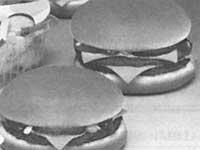Koipua, Indian conqueror of Europe
1988/04/01 Aizpuru, Maria Luisa - Elhuyar Fundazioa Iturria: Elhuyar aldizkaria
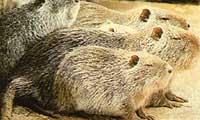
The import of leather knife similar to the beaver was made mainly for the commercialization of your skin. XX. In the early twentieth century the leather of this animal became very fashionable, so some began to grow animals imported from South America. But the crisis of the 1930s and World War II caused many growths to lose profitability and liberated animals in nature.
The story adapted very well to the humid climate and having no enemies, multiplied by excess. In France, for example, in the territory of Camargue, classified as a harmful species in the 1960s, especially for damages to plants.
But before moving on we will explain the customs and characteristics of this animal:
This thick rodent and herbaceous Miocastor coypus is neither rat nor beaver, but has inherited its qualities (myos in Greek = rat).
Apparently the only equality of the myobeaver with the rat lies in its rounded tail and as long as the body. It has thick body and when adult can weigh 5-10 kg. Long brown-yellowish teeth. To adapt to the aquatic half-life has two main characteristics: that the hind legs are palmate like those of the beaver or otter and that the females have the breasts in the upper part of the tailor almost to the back.
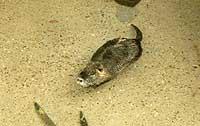
Meat, being rich in muscle and protein, has no envy of cow or rabbit. He has already dared to propose some of the most curious names, such as "marsh beaver", "water rabbit", "water hare", ...
Quick playback
Cocuento is a species that reproduces quickly, being able to have between 4 and 7 annual growths. They reach sexual maturity around the 6th month. They inhabit calm rivers with abundant vegetation, forming families of 2-5 adult animals. Due to their good behavior in dirty waters, they show a tendency towards the marshes. It is voracious and can easily eat plants daily as a quarter of its weight. Aquatic herbs, plants from river fields (corn, mainly wheat, barley) are part of their diet legumes and vegetables.
When they constitute a population higher than one level, they cause significant negative effects on the vegetation in times of greater autumn-winter vulnerability.
Axerie and dogs can hardly attack these skillful swimmers. The main enemy of the story is the cold. In winter there is usually a lot of animals without mud or fingers, due to the loss of ice.
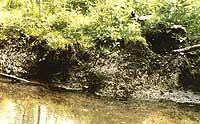
Although the farmer is often a hunter, he has not shown great fondness for this despicable hunt. On the other hand, an understandable contempt, as it is difficult to catch it and has maximum activity at night.
Considered a savage in France
In France the attack on these animals is regulated by Decree. In fact, it has been essential to attack them so that they do not increase their damage.
Each department chooses the most appropriate route of attack: trapping or using chemistry. Specific hunts are also organized.
However, and for the misfortune of environmentalists, the attack is usually mostly chemical. We have said this for the misfortune of ecologists, since this type of attack does not seem ecological or adequate. In addition, if natural aggression is favored with traps, spoon hunting would be a good solution for some unemployed. Of course, if you consider that they could sell the skin and meat of the animals so captured (for dog food).
In order to obtain a better performance of meat, that is, that it is useful for the consumption of people, the animals should be slaughtered according to precise hygienic controls.
People who try to raise stories use legalized slaughterhouses, so fairytale meat is marketed for consumption of people under the same conditions as any other bird. However, breeders have had to go a long way to getting fairytale meat to be accepted for people's consumption, since by continuing chemical attacks against cotale, the mixture of wild and breeding animals can be very harmful, since most wild animals are slaughtered with poison.
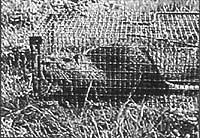
The fact that the story has been accepted for the consumption of people, has offered a new possibility to those engaged in cultivation, so the sale of meat has been a positive factor to add to the sale of leather.
Leather sale
As mentioned above, the cultivation of cofairy tale is done mainly for the commercialization of the skin.
It is a mink like skin. The leather is purchased musculated (deburred), but leaving the months to half its length. These months protect the feather. It is the compact and fine feather that gives fairytale skin a fleece shape.
The skin of the story has been highly appreciated for the color changes that can be achieved with the conditions that are established in the origins of the growth: white champagne, blue-silver, yellow-sweet, black-ebony, etc.
The first craftsman who made this range of colors was the M.Sarhan gardener. He began as an amateur, but soon in 1948 he began to grow as a professional on the banks of the Avre River. The growth technique used by Sarhan has become an example.
The crop is clean and does not produce bad smells. It is also not noisy or polluting, and remains artisanal. You have to pass through the cages a stream of water that usually gives a cheerful look to the environment.
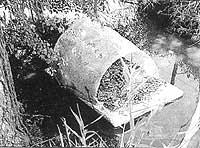
It is necessary to have a river nearby and have a regular flow, since it is necessary to modify the amount of water from 500 liters to 3 m per animal and day. Keep warm water temperature to prevent winter freezing of the water in the boxes. The decanting well is necessary to prevent the dirty water from the boxes from contaminating the river.
Fairytale skins imported from Argentina, Louisiana and Poland exercise tough competition over breeders. However, the variety of colors achieved through cultivation is an important factor and can have an optimal future if breeders manage to offer a wider set of colors.

Gai honi buruzko eduki gehiago
Elhuyarrek garatutako teknologia





